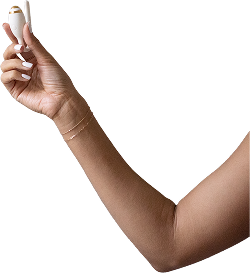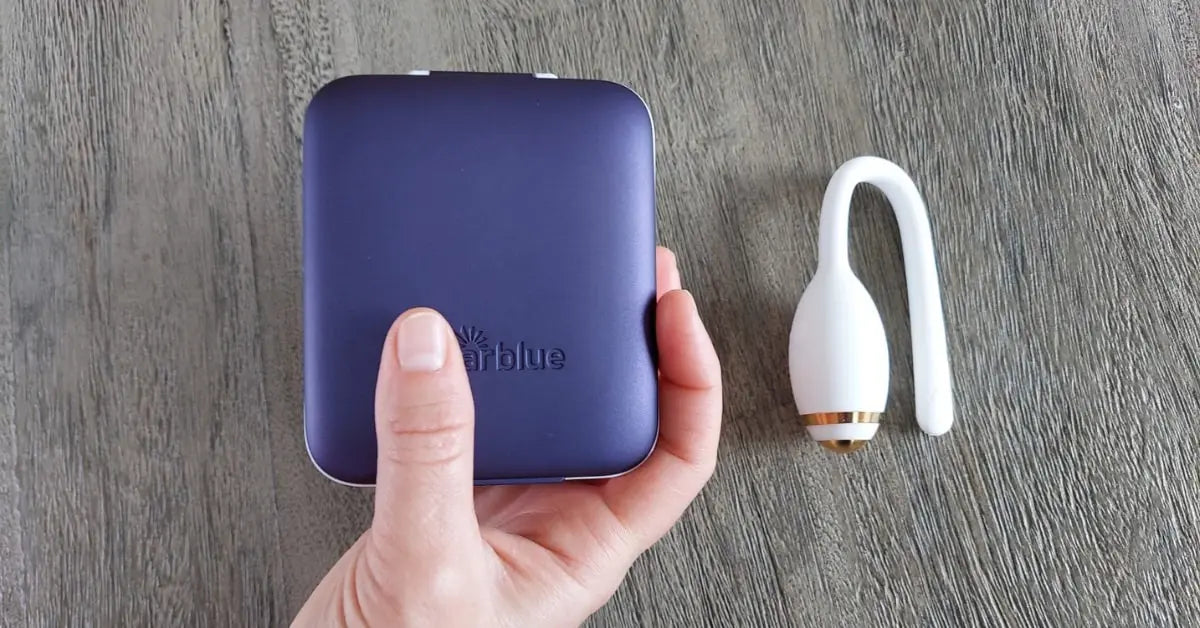At a glance:
- The Clearblue Fertility Monitor tracks urinary Hormone metabolites
- Clearblue reports if fertility is LOW, HIGH, or PEAK and not absolute values of each hormone
- Takes 5 minutes to result
- Uses 10-20 sticks per cycle
- kegg detects the changes in the cervical fluid to show when the user is fertile
- kegg displays the readings on a chart, shows the overall trend of the readings as well as the actual readings, and provides a fertile window prediction in advance
- kegg can be used at a time of day that is convenient for the user within the same 2 hour window
- There are no recurring fees with kegg
What is the Clearblue Fertility Monitor?
The Clearblue Fertility Monitor is a device designed to help determine the fertile days each cycle. The user urinates on a fertility test stick and the test stick is then inserted into the Clearblue Fertility Monitor which detects the estrogen and luteinizing hormone (LH) levels. The monitor does not provide values for these hormone levels, but instead indicates if fertility is LOW, HIGH, or PEAK after each reading.
Key Features:
Key Features:
- The monitor has a touchscreen to allow the user to input her period, follow the directions for which days to use the fertility test sticks, and to read the fertility predictions (LOW, HIGH, or PEAK).
- A test is completed with first morning urine within a 6 hour timeframe.
- The monitor indicates which day to use a test stick-either 10 days or 20 days depending on cycle length.
- Requires 10 or 20 test sticks per month depending on cycle length
- Typically indicates 3-6 days as fertile
- Test sticks are single use

What is kegg?
kegg provides precise cervical mucus tracking and an advanced fertile window prediction by sensing the electrolytes present in the cervical mucus. kegg readings are plotted on a chart along with the green fertile window prediction.

As the cervical fluid becomes more hospitable to sperm, the kegg readings descend on the kegg chart. These descending and low readings help the user recognize that it is time to try to conceive. After ovulation when progesterone is rising, readings will then trend upwards once again. While users can watch this trendline unfold, kegg’s intelligent algorithm detects this pattern to predict when the user will enter their fertile window, in advance.
kegg is used daily for 2 minutes. The kegg app provides both written predictions as well as plotted results on the kegg chart. The app allows the user to enter several individual biophysical measurements, such as Basal Body Temperature, cervical mucus observations, LH, PdG, protected versus unprotected intercourse, pregnancy, and more.
Key Features:
kegg is used daily for 2 minutes. The kegg app provides both written predictions as well as plotted results on the kegg chart. The app allows the user to enter several individual biophysical measurements, such as Basal Body Temperature, cervical mucus observations, LH, PdG, protected versus unprotected intercourse, pregnancy, and more.
Key Features:
- A small device used vaginally 2 minutes a day to predict the fertile window
- It doubles as a kegel ball
- Sleek, durable design
- Comes with charging cradle
- kegg results display on a graph with the predicted fertile window in green. The user can see daily results plotted on the chart
- Uses an intelligent algorithm that learns the user’s cycle trends for accurate predictions
- Reminder Notifications to help your consistent usage

Concluding Thoughts:
Both the Clearblue Fertility Monitor and kegg are designed to predict when the user may potentially be fertile, but do so by very different mechanisms. The Clearblue Fertility Monitor uses test sticks that detect LH and estrogen, while kegg detects the electrolytes present in the cervical fluid. While both devices provide the user with written fertility predictions, kegg allows the user to see their results plotted on their chart for a more comprehensive predictive picture.
In addition, cost of ownership is significantly higher with the Clearblue Fertility Monitor despite the slightly higher initial investment with kegg.
In addition, cost of ownership is significantly higher with the Clearblue Fertility Monitor despite the slightly higher initial investment with kegg.

The kegg app allows the user to input other fertility tracking data, such as their temperature, whereas the Clearblue Fertility Monitor is limited to only the user’s period and intercourse. One of the most notable differences that sets kegg apart from the Clearblue Fertility Monitor is kegg’s predictive algorithm. kegg “learns” the user’s cycle trends in order to provide accurate predictions in advance.




